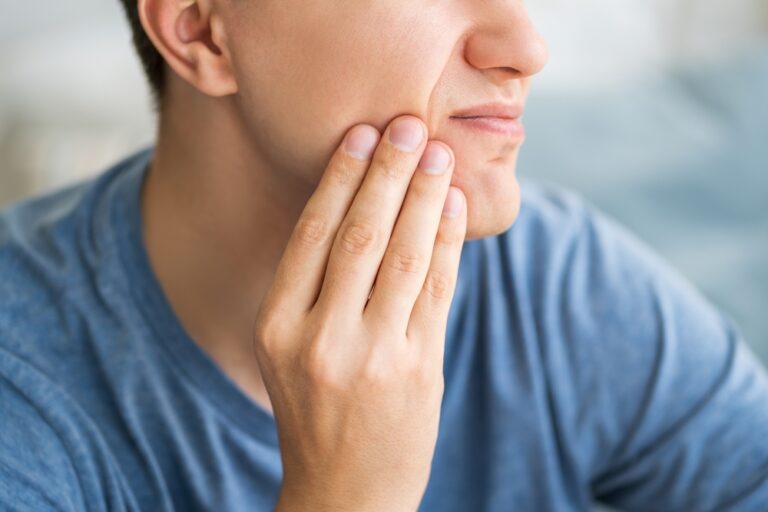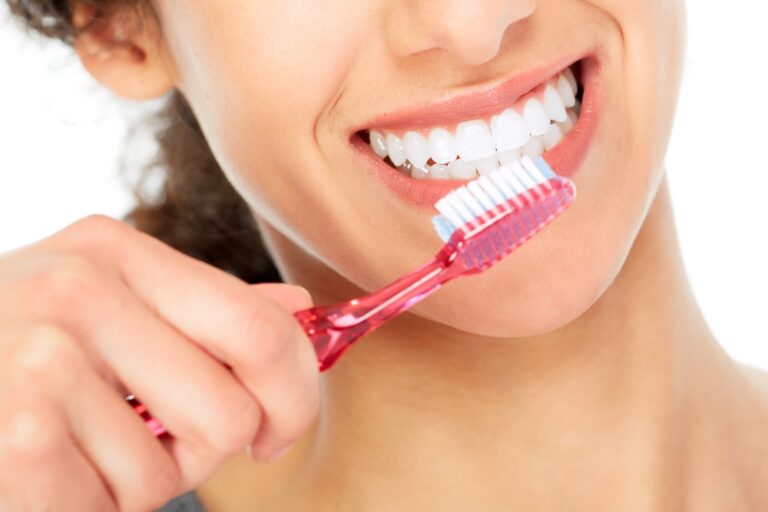Are you wondering if your 2-year-old is still teething? The answer is yes, it is possible. According to the American Dental Association, 2-year molars typically come through when a child is 23-33 months old. While some toddlers show no signs of pain while teething, others may experience discomfort and fussiness.
Teething is often an unpleasant experience for babies, as well as for parents who can be left feeling helpless to resolve the discomfort. Thanks to their larger size and double edges, the 1-year and 2-year molars can be twice as difficult to cut as those baby incisors — and that usually means double the toddler teething pain. Luckily, there are plenty of ways you can help ease the aches. When does toddler teething typically happen? What are the symptoms and remedies for 2-year molars? Keep reading to find out.
Understanding Teething

What is Teething?
Teething is the process of a baby’s teeth breaking through the gums. It can be a painful and uncomfortable experience for both the baby and the parents. During this time, the baby may experience symptoms such as irritability, drooling, and difficulty sleeping.
Teething Timeline
The timeline for teething can vary from child to child, but here is a general overview of when you can expect your child’s teeth to come in:
- 6-10 months: The front teeth (central incisors) usually come in first.
- 8-12 months: The side teeth (lateral incisors) usually come in next.
- 9-13 months: The first molars usually come in next.
- 13-19 months: The canines usually come in next.
- 16-23 months: The second molars usually come in last.
It is important to note that these timelines are just estimates and every child is different. Some children may start teething earlier or later than others. Additionally, some children may experience more symptoms than others while teething.
Overall, teething can be a challenging time for both you and your child. However, with patience and care, you can help ease your child’s discomfort and help them through this process.
Two-Year-Olds and Teething
If you have a two-year-old, you may be wondering if they are still teething. The answer is yes, some two-year-olds are still teething. Here are some things you should know about teething in two-year-olds.
Late Teething
While most children have all of their baby teeth by the age of two, some children may still be getting their teeth in. Late teething is defined as a child who has not gotten any teeth by 15 months or who has not gotten all of their baby teeth by the age of three. Late teething can be caused by a variety of factors, including genetics, premature birth, and certain medical conditions.
Symptoms in Two-Year-Olds
If your two-year-old is still teething, they may experience some of the same symptoms as younger children. These symptoms can include:
- Irritability
- Difficulty sleeping
- Loss of appetite
- Drooling
- Chewing on objects
- Swollen or tender gums
To help ease your child’s discomfort, you can try giving them a cold teething ring or a cold washcloth to chew on. You can also try giving them a pain reliever like acetaminophen or ibuprofen, but be sure to check with your child’s doctor first.
In conclusion, it is possible for a two-year-old to still be teething. If you are concerned about your child’s teething, be sure to talk to their doctor.
How to Soothe a Teething Toddler

Teething can be a painful and uncomfortable experience for toddlers. Here are some tips to help soothe your teething toddler:
- Rub their gums: Gently rubbing your toddler’s gums with a clean finger or wet gauze can help relieve some of their discomfort. The pressure can ease your toddler’s pain and discomfort.
- Use a cold compress: A cold spoon or chilled teething ring can be soothing on your toddler’s gums. Make sure the teething ring is not frozen, as this can cause damage to their gums. To avoid cavities, do not dip these items in sugary substances.
- Provide cold foods: Cold foods can also help soothe your toddler’s sore gums. Try giving them chilled applesauce, yogurt, or pureed fruits and vegetables.
- Offer hard foods to chew on: If your toddler has started eating solid foods, offer them hard foods to chew on, such as carrots or cucumber slices. Make sure the pieces are small enough to prevent choking.
- Use over-the-counter remedies: If your toddler is in a lot of pain, you can try using over-the-counter remedies such as teething gels or pain relievers. Always follow the instructions on the label and consult with your pediatrician before giving your toddler any medication.
Remember, every child is different, and what works for one may not work for another. Keep trying different methods until you find what works best for your teething toddler.
When to Consult a Pediatric Dentist
It is important to take care of your child’s dental health from an early age. Regular dental check-ups can help prevent dental problems and ensure your child’s teeth are developing properly. Here are some signs that it’s time to consult a pediatric dentist:
1. Tooth Decay
Tooth decay is a common dental problem among children. If you notice brown or black spots on your child’s teeth, it’s a sign of tooth decay. You should take your child to a pediatric dentist as soon as possible to prevent the decay from spreading and causing further damage.
2. Delayed Tooth Eruption
If your child’s teeth are not erupting on time, it could be a sign of a dental problem. A pediatric dentist can examine your child’s teeth and determine if there are any underlying issues that may be causing the delay.
3. Teething Pain
Teething can be a painful experience for children. If your child is experiencing severe teething pain, it’s important to consult a pediatric dentist. They can recommend pain relief options and ensure that your child’s teeth are developing properly.
4. Grinding Teeth
Grinding teeth is a common problem among children. It can cause dental problems and affect your child’s sleep quality. If your child is grinding their teeth, it’s important to consult a pediatric dentist. They can recommend treatment options to prevent further damage.
5. Trauma to Teeth
If your child has experienced trauma to their teeth, it’s important to consult a pediatric dentist. They can examine the teeth and determine if there is any damage that needs to be addressed. Prompt treatment can prevent further damage and ensure that your child’s teeth are healthy.
In summary, regular dental check-ups are important for your child’s dental health. If you notice any signs of dental problems, it’s important to consult a pediatric dentist. They can provide the necessary treatment and ensure that your child’s teeth are developing properly.
Myths and Misconceptions About Teething

As a parent, you have probably heard a lot of myths and misconceptions about teething. Some of these may have been passed down from your own parents or grandparents, while others may have come from well-meaning friends or even healthcare professionals. However, it is important to separate fact from fiction when it comes to teething, so that you can provide the best care for your child.
Here are some common myths and misconceptions about teething:
Myth 1: Teething causes fever, diarrhea, and other illnesses
Many parents believe that teething can cause a variety of symptoms, including fever, diarrhea, and other illnesses. However, there is no scientific evidence to support these claims. While some babies may experience mild symptoms like drooling, irritability, and chewing on objects, teething itself does not cause fever, diarrhea, or other illnesses.
Myth 2: Teething only happens in infants
While teething is most common in infants, it can actually occur at any age. In fact, some children may not get their first tooth until they are 12 months old or older, while others may start teething as early as 3 months old. Additionally, children may continue to teethe until they are 2 or 3 years old, as they get their molars and canines.
Myth 3: Teething can be cured with home remedies
There are many home remedies that are said to help soothe teething pain, including rubbing the gums with a clean finger or cloth, giving the child a cold teething ring or washcloth to chew on, and using natural remedies like chamomile tea. While these remedies may provide temporary relief, there is no scientific evidence to support their effectiveness. In some cases, home remedies may even be harmful, such as giving the child alcohol or numbing gels.
Myth 4: Teething causes permanent damage to teeth
Some parents may worry that teething can cause permanent damage to their child’s teeth, such as making them crooked or causing decay. However, teething itself does not cause any permanent damage to teeth. It is important to maintain good oral hygiene practices, such as brushing and flossing, to prevent decay and other dental problems.
In conclusion, while there are many myths and misconceptions about teething, it is important to rely on accurate information and scientific evidence when caring for your child. By understanding the facts about teething, you can provide the best care and support for your little one.
Frequently Asked Questions
When do 2 year molars come in?
Most children get their 2 year molars between the ages of 1.5 to 3 years old. However, every child is different and some may get them earlier or later.
How long does it take 2 year old molars to erupt?
The process of getting 2 year molars can take several weeks or even months. It is normal for the molars to take longer to erupt than other teeth.
Do 2 year olds have teething pain?
Yes, some 2 year olds may experience teething pain as their molars come in. This can cause discomfort, irritability, and disrupted sleep.
Should a 2 year old still be teething?
Yes, it is normal for 2 year olds to still be teething as their molars come in. However, if you are concerned about your child’s teething or if they are experiencing excessive pain or other symptoms, it is important to speak with a pediatrician.
What are the symptoms of teething molars?
Common symptoms of teething molars include drooling, irritability, disrupted sleep, chewing on objects, and swollen or tender gums. Some children may also experience ear pulling or face rubbing.
How can I help my 2 year old with teething pain?
There are several ways to help relieve teething pain in a 2 year old, including giving them a cold teething ring or washcloth to chew on, massaging their gums with a clean finger, and using over-the-counter pain relievers like acetaminophen or ibuprofen (always check with a pediatrician before giving medication). It is also important to provide plenty of comfort and reassurance to your child during this uncomfortable time.







